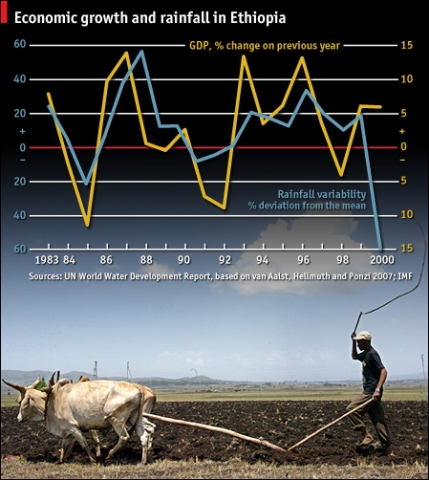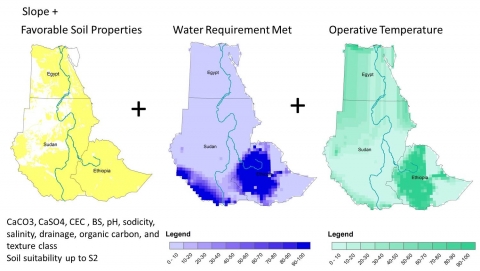Supporting Cooperation in the Nile Basin
Team Member: Anjuli Jain Figueroa
Any development project that is implemented in a trans-boundary river is in essence a claim on the resource. Too many upstream demands for water could leave the downstream countries thirsty. Egypt asserts that it will defend its legal right to water. To prevent conflicts, any development projects must be carefully managed and informed to avoid straining the natural and political limits. The Nile Basin Initiative is the institutional entity in charge of informing and managing the Nile.
Egypt is the most developed of the three with a 2010 GDP/capita of $6400; it is also the driest with average rainfall of 25 mm/year and has the largest (>60%) legal water allocation in the’ 1959 agreement’. Ethiopia on the other hand is the least developed ($1000 GDP/capita, 2010) with rapidly growing population. It is the rainiest of the three with average rainfall of 1000mm/yr. However, no Nile waters have been legally allocated to Ethiopia, a country that continually suffers from famines and extended poverty.


